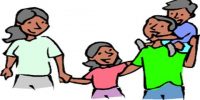Autism is a neurodevelopmental disorder. It is a complicated condition that includes problems with communication and behavior. It is characterized by impaired social interaction, verbal and non-verbal communication, and restricted and repetitive behavior. People with autism have trouble with communication. They might have large delays in language, social, and cognitive skills, while their motor skills might be about the same as other children their age.
Parents usually notice signs of autism in the first two years of their child’s life. They have trouble understanding what other people think and feel. These signs often develop gradually. In some cases, children with autism reach their developmental milestones at a normal pace and then lose speech and social skills. This makes it hard for them to express themselves, either with words or through gestures, facial expressions, and touch. The symptoms and characteristics of autism can present themselves in a wide variety of combinations, from mild to severe.
Common symptoms of autism include: Autism symptoms typically become clearly evident during early childhood, between 12 and 24 months of age. However, symptoms may also appear earlier or later.
- A lack of eye contact
- A narrow range of interests or intense interest in certain topics
- Doing something over and over,
- Not looking at or listening to other people
- Problems understanding or using speech, gestures, facial expressions, or tone of voice,
- Talking in a sing-song, flat, or robotic voice, etc.
Usually, autism occurs before age three. When a child is diagnosed with an autism spectrum disorder, families face the next challenge: choosing the right treatments and therapies for their child. There is no known single cause for autism, but it is generally accepted that it is caused by abnormalities in brain structure or function. While autism is highly heritable, researchers suspect both environmental and genetic factors as causes. In some rare cases, birth defects are responsible for autism. The American Academy of Pediatrics (AAP) recommends that all children undergo screening for ASD at the ages of 18 and 24 months. There are no “cures” for autism, but therapies and other treatment considerations can help people feel better or alleviate their symptoms. Screening can help with the early identification of children who could have ASD. It’s important to note that screening isn’t a diagnosis.
People with autism might have problems with learning. Their skills might develop unevenly. Autistic children mainly display many forms of repetitive or restricted behavior, and there some other symptoms like superior skills in perception and attention. For example, they could have trouble communicating but be unusually good at art, music, math, or memory. Treating children with autism is mostly behavioral. Because of this, they might do especially well on tests of analysis or problem-solving. Medication can be introduced when behavioral treatment fails.
















